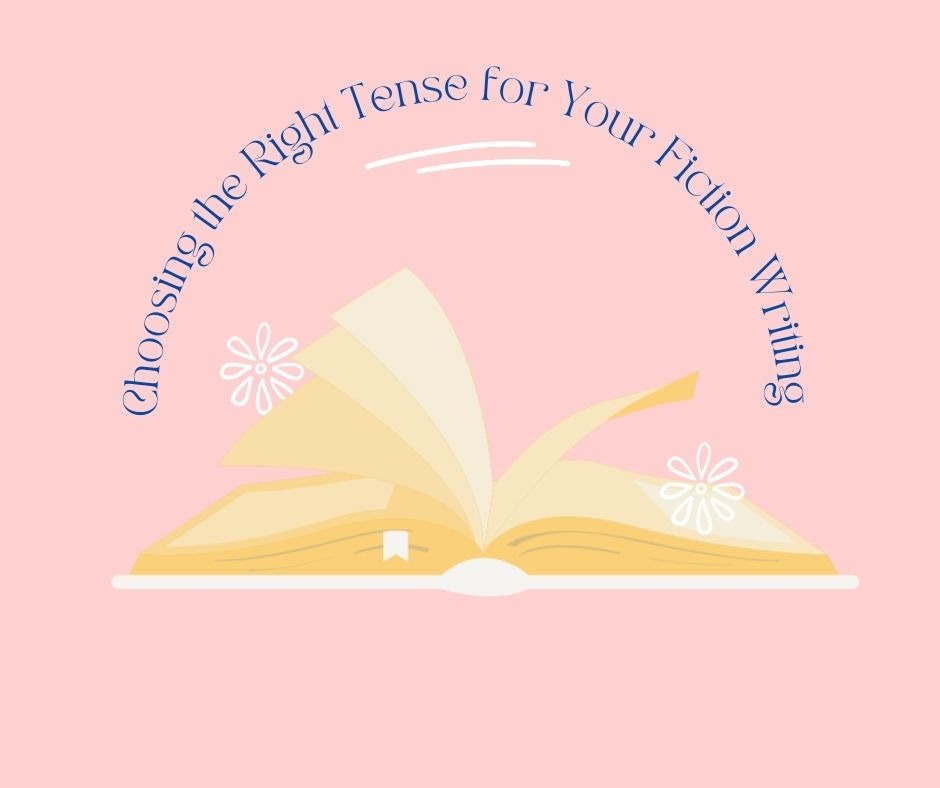Choosing the Right Tense for Your Fiction Writing
When starting a new writing project, one of the key decisions you’ll face is what tense to use. Whether this is your first book or the next project in your established list, knowing how to choose the right tense to write in can be a little confusing. However, your chosen tense can set your story's tone, pacing and emotional depth.
In this post, we’ll explore the different tense options available in fiction writing, their effects on the narrative and how to decide which is best for your story.

Understanding the Main Tense Options
There are three primary tenses to consider when writing fiction: past, present and future. While past tense is most commonly used in general fiction, present tense has grown increasingly popular over recent years. Future tense, however, is rarely used. Let’s break down each option:
1. Past Tense (Most Common)
The past tense is the most traditional and widely used tense in fiction. It describes actions and events that have already happened, creating a sense of distance between the reader and the events of the story.
Example: She walked along the shore, listening to the sound of the waves as they lapped against the sand.
Effect: Past tense gives the story a reflective quality, allowing the narrator or character to look back on events with perspective. It also offers flexibility for the author to move through time, use flashbacks and provide insights into multiple characters’ thoughts and emotions.
Why It’s Popular: Most novels are written in past tense because it feels familiar and natural to readers. It allows for a lot of narrative freedom—whether you want to describe something that happened years ago or just moments before the main action of the story, past tense handles it easily.
Pros:
- Feels familiar and easy to read.
- Allows for complex timelines and shifts between past events and the present.
- Works well for reflective, character-driven narratives.
Cons:
- Lacks the immediacy of present tense.
- Can feel too detached if you want the reader to experience events as they happen.
Past tense is a solid, dependable choice for most genres, whether you’re writing literary fiction, historical fiction or even contemporary works.
2. Present Tense (Increasingly Popular)
Present tense is becoming more common, especially in genres like young adult fiction, thrillers and contemporary fiction. It describes events as they are happening in "real-time," putting the reader right in the middle of the action.
Example: She walks along the shore, listening to the sound of waves as they lap against the sand.
Effect: Writing in present tense creates a sense of immediacy, pulling the reader into the moment and making them feel like they are experiencing events alongside the characters. It can build tension and urgency, which is why it’s often used in fast-paced, action-heavy stories.
Why It’s Effective: Present tense makes the story feel more direct and immersive. Because events are happening right now, the reader doesn’t have the benefit of hindsight or distance, making them feel more involved and emotionally engaged.
Pros:
- Builds suspense and tension.
- Creates a sense of urgency and immediacy.
- Great for stories with fast-paced, linear plots.
Cons:
- Can feel limiting when trying to describe past events or transitions in time.
- Some readers find it jarring, as it’s less commonly used.
- Reflecting on events or building narrative complexity can be harder.
Present tense works well when you want the reader to stay in the moment, especially in action-packed genres like thrillers or stories that unfold in a single timeline without flashbacks.
3. Future Tense (Rare but Powerful)
The future tense is the least common tense in fiction writing. It describes events that will happen and is often used in more experimental or speculative fiction. Maintaining this tense for an entire story can be challenging but, when used for effect, it creates a unique tone.
Example: She will walk along the shore and will listen to the sound of the waves as they lap against the sand.
Effect: Future tense adds a sense of anticipation, destiny or even inevitability to the story. It can be especially powerful in stories that deal with fate, prophesy or a character’s sense of future events.
Why It’s Rare: Writing in future tense for long stretches can feel awkward and unnatural for both the writer and the reader. Most readers are more accustomed to past or present tense, so the future tense might disrupt the flow of the narrative.
Pros:
- Unique and distinctive tone.
- Can add a sense of fate or inevitability.
- Works well for speculative or experimental fiction.
Cons:
- Difficult to maintain over long periods.
- May feel unnatural for readers used to past or present tense.
Though it’s rarely used for an entire novel, future tense can be effective in short stories or in sections of a novel that need to highlight the certainty or uncertainty of upcoming events.
Other Tense Considerations
In addition to choosing between past, present and future tense, there are a few other options that might come into play as you shape your story’s timeline and structure:
Shifting Tenses
Some stories shift between tenses, using past tense for the main narrative and present tense for flashbacks or vice versa. For example, a character might narrate their story in past tense, but you could switch to present tense in dream sequences or moments of deep introspection.
While it’s possible to mix tenses, it’s important to do so with clarity. Abrupt or unclear shifts can confuse the reader, so make sure transitions are smooth and intentional.
Perfect Tenses
Perfect tenses can be useful when you need to describe events that happen before or after the main action of the story. For example:
Past perfect: She had walked along the shore before the storm began. This tense shows an action that was completed before another event in the past.
Present perfect: She has walked along the shore many times. This tense describes an action that happened at some point in the past but is relevant to the present.
Perfect tenses are often mixed with other tenses to add more layers to the story’s timeline.
How to Decide Which Tense to Use
Choosing the right tense for your story depends on several factors, including your genre, plot structure and narrative voice. Here are some key questions to consider:
1. What’s the genre of your story?
- Present tense works well in action-heavy, fast-paced genres like thrillers and young adult fiction.
- Past tense is more traditional and tends to work best in genres like literary fiction, fantasy or historical fiction.
2. What’s the mood or tone of your story?
- Present tense creates urgency and immediacy, making it great for suspenseful or emotionally charged stories.
- Past tense allows for more reflection and distance, which can be helpful in stories that unfold over long periods of time.
3. How do you want the reader to experience the story?
- If you want the reader to feel like they’re experiencing the action as it happens, present tense is a strong choice.
- If you want the reader to reflect on events along with the narrator, past tense is more suitable.
At the end of the day...
There is no “right” or “wrong” tense for your story. The most important thing is to choose the tense that serves your narrative and enhances the reader’s experience. Whether you opt for the familiarity of past tense or the immediacy of present tense, the key is to remain consistent and ensure the tense supports the emotional and thematic elements of your story.
Don’t be afraid to experiment. If you're struggling to decide which to go with, why not try writing a few scenes in different tenses to see what feels natural for your story? Ultimately, the best tense is the one that allows you to tell your story in the most effective and engaging way possible.
Happy writing!


0 Comments Add a Comment?